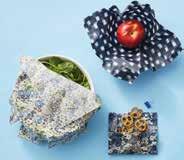















The most common member of a bee colony is the infertile female bees known as the worker.



She has many duties including cleaning cells, nurse, wax production, capping cells, feeding drones, attending to the queen, building honeycomb, storing pollen, propolis production, removing dead bees, fanning, gathering water, guarding the colony, foraging nectar and pollen, scouts seeking a new home when the colony swarms.
These duties are carried out by most workers according to mostly, their age.
Ruling a colony by only one at a time, the queen bee is capable of producing up to 2,000 eggs per day.
As she ages her egg laying abilities decline and often lays her eggs in an irregular pattern.
If the queen were to suddenly die, an unplanned and urgent queen cell will be constructed by the workers to raise a queen.
The difference between a queen and a worker is the level of extra nourishment. A queen is fed royal jelly in its’ first two days of life.
As the only males in the colony, the drones sole purpose in life is to find and mate with a queen.
The drone only has 16 chromosomes (as opposed to the females that have 32) which means the drone inherits all its’ genetic makeup from its’ mother.
The drone is the only bee without a stinger to defend itself.
As winter approaches and food supplies become scarce, any drones remaining in the colony will often be thrown out of the colony by the workers.
You probably already know about the most important ingredient needed to make honey: flowers.
A colony of bees can visit up to 50 million flowers each day, with as many as 60,000 bees in each colony. They’re not called busy bees for nothing!
Honey bees work together as a team to make decisions about where the best flowers are. They communicate with each other using bumps, noises and even dance moves known as the waggle dance.
Nectar is the main ingredient for honey and also the main source of energy for bees. Using a long straw-like tongue called a proboscis, honey bees suck up nectar droplets from the flower’s special nectar-making organ, called the nectary.

When the nectar reaches the honey bee’s stomach, the stomach begins to break down the complex sugars of the nectar into more simple sugars that are less prone to crystallization, or becoming solid. This process is called “inversion”. Once a worker honey bee returns to the
colony, it passes the nectar onto another younger bee called a house bee (between 12-17 days old).
House bees take the nectar inside the colony and pack it away in hexagon-shaped beeswax honey cells. They then turn the nectar into honey by drying it out using a warm breeze made with their wings.


- Bees wax pellets
- 100% cotton fabric
- Pinking sheers
- Paint brush
- Baking paper
- Oven tray - Coat hanger - Pegs
Cut the fabric to desired size. Preheat oven to 200ºC fan forced.
Step two:
Place fabric on baking paper. Evenly sprinkle beeswax pellets over the fabric.


Step three:
Place tray in the oven to melt beeswax for approximately 4-8 minutes. When melted use brush to spread out wax.


Step four:

Remove fabric from baking tray. Use pegs to attach to coathanger and let dry.


Step five:
DIY beeswax food wraps are ready to use in the kitchen. Enjoy feeling good and being plastic free!


- Organic clay - Potting mix - Bowl

- Water - Native flower seeds
Step one:
Mix clay and potting mix together, adding a little water if needed – just enough to bind together.




Step two:
Grab a small handful of the mixture, and make a flattish disc in your hand, like a tiny burger patty. Add 4-5 seeds to the middle and then roll to form a ball around the seeds.
Step three:

Place all completed seed bombs on a plate. Let dry for 24 hours in a cool and dark place.
Go throw your seed bombs of joy around gardens, for flowers and happy bees!

